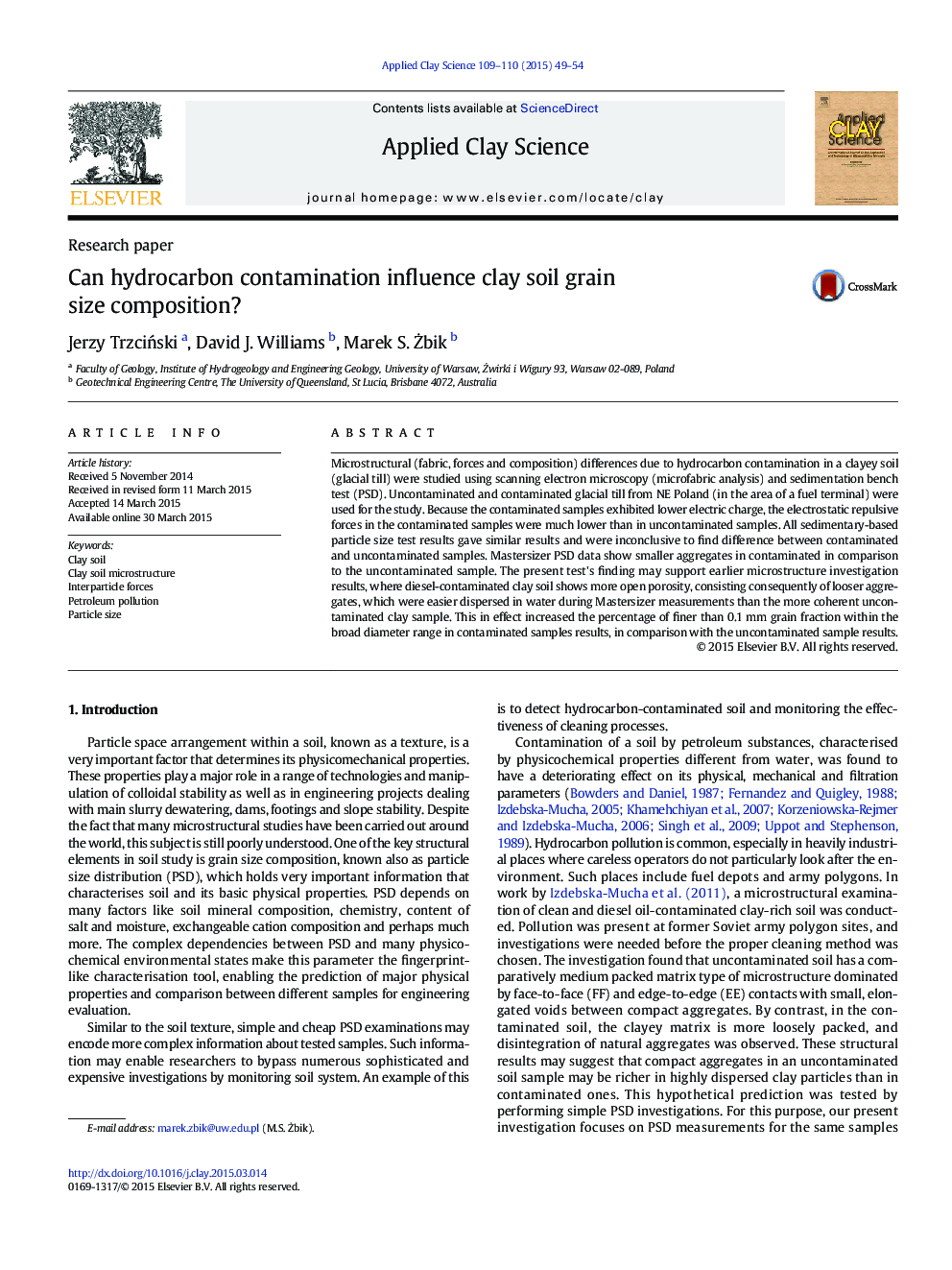| Article ID | Journal | Published Year | Pages | File Type |
|---|---|---|---|---|
| 1694429 | Applied Clay Science | 2015 | 6 Pages |
•PSD diversity due to hydrocarbon contamination in a clayey soil was studied.•All sedimentary-based particle size tests results gave insignificant results.•The Mastersizer PSD results show difference between polluted and non polluted samples.•In polluted samples increased in broad range the percentage of finer than 0.1 mm grain fraction.
Microstructural (fabric, forces and composition) differences due to hydrocarbon contamination in a clayey soil (glacial till) were studied using scanning electron microscopy (microfabric analysis) and sedimentation bench test (PSD). Uncontaminated and contaminated glacial till from NE Poland (in the area of a fuel terminal) were used for the study. Because the contaminated samples exhibited lower electric charge, the electrostatic repulsive forces in the contaminated samples were much lower than in uncontaminated samples. All sedimentary-based particle size test results gave similar results and were inconclusive to find difference between contaminated and uncontaminated samples. Mastersizer PSD data show smaller aggregates in contaminated in comparison to the uncontaminated sample. The present test's finding may support earlier microstructure investigation results, where diesel-contaminated clay soil shows more open porosity, consisting consequently of looser aggregates, which were easier dispersed in water during Mastersizer measurements than the more coherent uncontaminated clay sample. This in effect increased the percentage of finer than 0.1 mm grain fraction within the broad diameter range in contaminated samples results, in comparison with the uncontaminated sample results.
Graphical abstractFigure optionsDownload full-size imageDownload as PowerPoint slide
